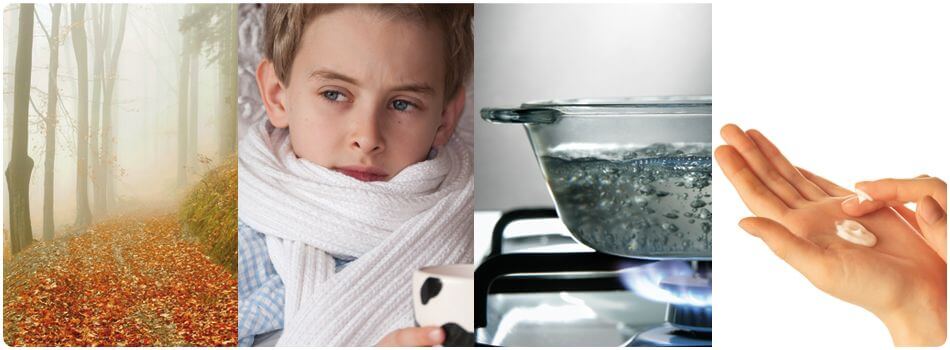Debunking the myths about humidity

Often the word humidity is associated with commonplaces that have negative connotations.
In reality, many ideas we have about humidity are wrong, based on just superficial knowledge of what it really is.
The aim of this section is to list some of the most common "false myths" regarding humidity, to understand how it is more useful (and often essential) than is often thought.
Indeed, at times it may even need to be generated using humidifiers.
It's foggy outside
One cubic metre of outside air at zero degrees and with a relative humidity of 75% contains 2.9 grams of water vapour; the same air heated to twenty degrees (average temperature inside the home) without adding water vapour, has a relative humidity of 20%, which is way too low to be comfortable! Indeed the minimum relative humidity essential for human well-being is around 45%-50%.
Relative humidity depends on temperature: the more the air is heated, the lower the relative humidity.
For example, in winter outside air at 0°C on a foggy day (100% relative humidity) heated indoors to 22°C gives a relative humidity of 23%.
In places with very dry winters, then, with an outside temperature of 0°C and a relative humidity of 30%, when the air is heated to 22°C, the relative humidity plunges to 7%.
As a result, even if it's foggy outside (a lot of moisture in the air), it does not mean that inside a heated room the humidity level will be right.
To get to the optimum humidity level the air needs to be humidified.
Humidity and the feeling of cold
There is also a physiological effect of humidity that is often neglected: the effect on the feeling of hot or cold. We all know that perspiration is an important part of the organism's thermal control mechanism: the evaporation of sweat subtracts heat, thus making us cool.
In summer, when it's hot, increased perspiration tends to return the skin temperature to a comfortable level. High humidity stops the evaporation process (sultriness), while dry air favours evaporation and consequently cooling.
In winter, drier air assists evaporation and thus the cooling of the skin. The most immediate effect of this phenomenon is that for the same temperature, the drier the air the colder we feel. At the typical temperatures in a heated home, the "apparent temperature" (that is, the subjective perception of temperature that relates to personal comfort) increases by around 2°C when the relative humidity increases from 25% to 50%. In other words, if the humidity is at the right level, in addition to all the other advantages, we can save on room heating.
Effects of dry air on people and things
Humidity is also very important for human health.
For people, one problem caused by low humidity is a sense of irritation to the eyes, that is, dryness of the cornea, which is often a serious problem for contact lens wearers. The skin is also affected by the amount of moisture in the air, drying and chapping when the humidity is low, above all the hands and the face, which are in direct contact with the dry air.
Another problem is dryness of the mucous in the respiratory tracts, which as well as aggravating asthma and allergies for sufferers of such conditions, decreases the defences of the organism.
Turning our attention then to the effect of low humidity on objects, we can give infinite examples. Hygroscopic is the term given to materials whose cells absorb moisture, leading to a variation in their dimensions, and effect that can be seen in paper, fabrics, some plastic materials, wood, fruit and vegetables and other materials that have the property to absorb or release moisture. Moreover, humidity affects the physical characteristics of materials, such as viscosity (e.g. photoresist in the microelectronics industry), mechanical strength/fragility (textiles industry, tobacco industry, wood and timber processing) and the probability of electrostatic discharges (paper, textiles and electronics).
Sources of humidity inside the home
In the home there are many sources of humidity, from clothes hung out to dry to boiling water used to cook pasta.
Moreover, people enter and leave the home, windows are opened, the walls transpire, without considering the inevitable small cracks and openings. One little known fact is that the small amount of fresh air that enters the home when opening a window, for example, has a negligible effect on the room temperature, yet causes a significant drop in the relative humidity.
In other words, water vapour "escapes" much more quickly than heat, due to the physical properties of gases.
The paradox is then that letting in fresh air in winter without adding moisture may in fact decrease the quality of the air, making it too dry.
In addition, the containers of water attached to radiators are useless, because too little water evaporates.
To prove this, simply measure the humidity using a simple wall-mounted hygrometer, with and without water in the containers: the difference will be negligible.
